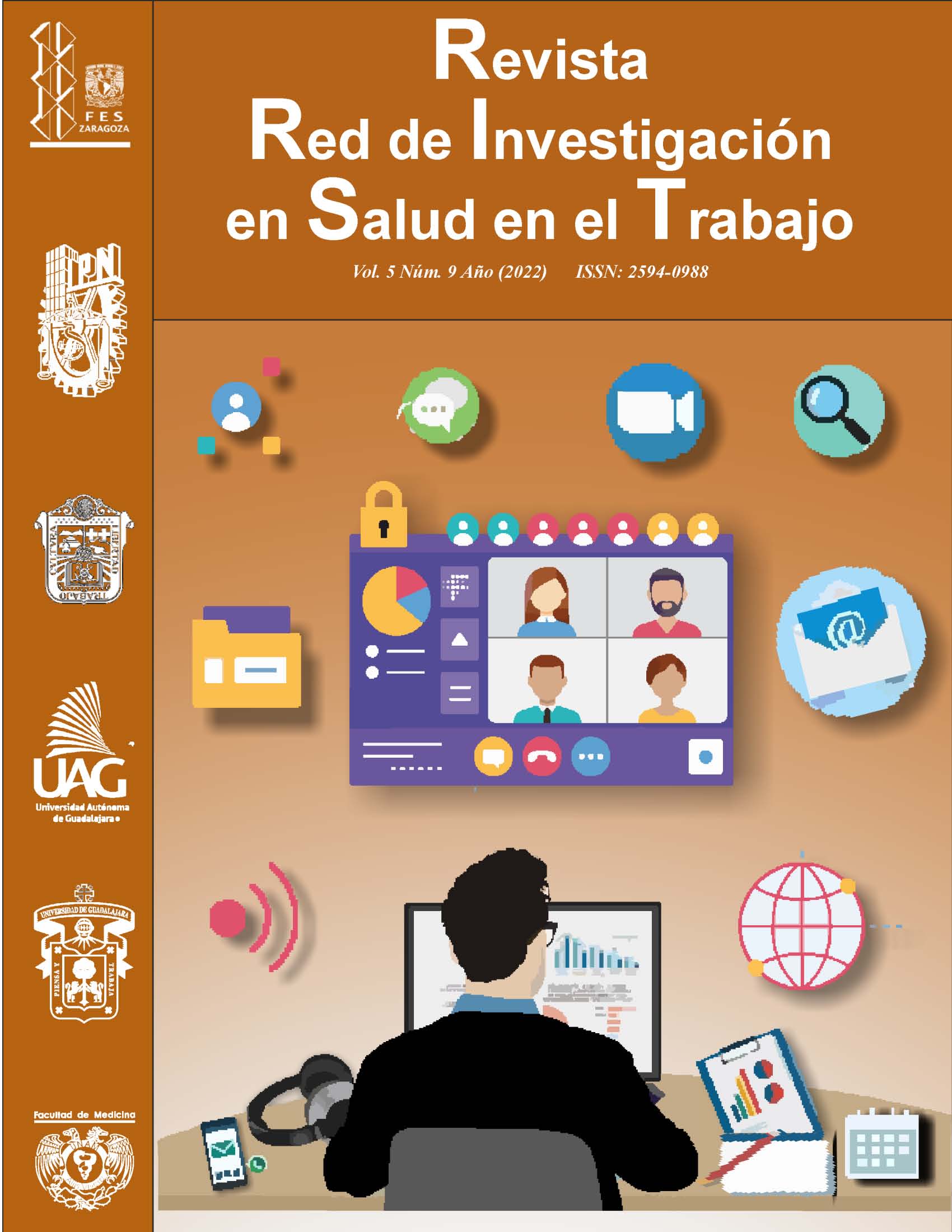Complexity in assessment of fatigue in aviation: some used methods / Complejidad en la evaluación de la fatiga operacional: algunas herramientas utilizadas.
algunas herramientas utilizadas.
Resumen
Introduction: Operational fatigue is a physiological state that involves a reduction of physical and/or mental capacities and might jeopardize safety in aerial operations. This pathology that could develop in any aviation personnel has increased its prevalence due to the fast-growing demands of the industry favoring modifications of the pilots´ journeys like longer flying and service times, rotating and night shift working.
Review: Aiming to mitigate operational fatigue many efforts to assess, measure, and predict it has been made, approaching it by its causes and manifestations that altogether result in a lot of ways to study this pathology. Tangible or objective manifestations have been searched individually in organs, in the whole apparatus, and by tests that bring many body systems together. Subjective tests, even easier to apply, might represent limitations and disadvantages since they depend on what the contestant would like to answer.
Conclusion: The complexity of the phenomenon has generated a tendency to use more than one test to assess operational fatigue. This is the right practice at least until validation of subjective tests can be carried out and its application allows constant and credible evaluations.
##plugins.generic.usageStats.downloads##
Citas
Arintescu, L., Chachad, R., Gregory, K., Mulligan, J. B., & Flynn-Evans, E. E. (2020). The Relationship Between Workload, Performance and Fatigue in a Short-Haul Airline. Chronobiology International, 1492-1494. doi:10.1080/07420528.2020.1804924
Baulk, S. D., Reyner, L. A., & Horne, J. A. (2001). Driver sleepiness--evaluation of reaction time measurement as a secondary task. Sleep, 24(6), 695-698. doi:10.1093/sleep/24.6.695
Bourgeois-Bougrine, S., Carbon, P., Gounelle, C., Mollard, R., & Coblentz, A. (2003). Perceived fatigue for short- and long-haul flights: a survey of 739 airline pilots. Aviation, Space and Environmental Medicine, 74(10), 1072-1077. https://pubmed.ncbi.nlm.nih.gov/14556570/
Butola, M., Dahiya, Y., & Rao, B. (2020). Assessment of fatigue in personnel during sustained operations using ‘SOAP’ – Sustained Operational Assessment Profile. Indian Journal of Aerospace Medicine, 64, 2-7. doi:10.25259/ijasm_38_2020
Caldwell, J. A., Hall, K. K., & Erickson, B. S. (2002). EEG Data Collected From Helicopter Pilots in Flight Are Sufficiently Sensitive to Detect Increased Fatigue From Sleep Deprivation. The International Journal of Aviation Psychology, 12(1), 19-32. doi:10.1207/s15327108ijap1201_3
Di Stasi, L., McCamy, M., Martínez-Conde, S., Gayles, E., Hoare, C., Foster, M., . . . & Macknik, S. (2016). Effects of long and short simulated flights on the saccadic eye movement velocity of aviators. Physiology and Behavior, (153), 91-96. doi:10.1016/j.physbeh.2015.10.024
Gander, P. H., Signal, T. L., van den Berg, M. J., Mulrine, H. M., Jay, S. M., & & Jim Mangie, C. (2013). In-flight sleep, pilot fatigue and Psychomotor Vigilance Task performance on ultra-long range versus long range flights. Journal of Sleep Research, 22(6), 697-706. doi:/10.1111/jsr.12071
Hu, X., & Lodewijks, G. (2020). Detecting fatigue in car drivers and aircraft pilots by using non-invasive measures: The value of differentiation of sleepiness and mental fatigue. Journal of Safety Research, 72, 173-187. doi:10.1016/j.jsr.2019.12.015
LeDuc, P., Greig, J., & Dumond, S. (2005). Involuntary eye responses as measures of fatigue in US Army Apache aviators. Aviation, Space and Environmental Medicine, 86-91. https://pubmed.ncbi.nlm.nih.gov/16018334/
Leimann, H. O. (1985). Fatiga de vuelo. In H. O. Leimann, Psiquiatría Aeronáutica Sistémica (1a ed., pp. 320-321). Buenos Aires, Argentina: Kargieman.
Ley de Aviación Civil (L.A.C.). reformada. Diario Oficial de la Federación (D.O.F), 21 de enero de 2022, (México). https://dof.gob.mx/nota_detalle.php?codigo=5641134&fecha=21/01/2022#gsc.tab=0
Lindert, B., Brujei, J., van der Meijden, W., & Van Someren, E. (2012). Independent research on Pilot Fatigue Measurement by the Netherlands Aerospace Centre. http://publicapps.caa.co.uk/docs/33/Pilot%20Fatigue%20Measurement%20Research_Final%20Report_v0.9.1clean.pdf
Morris, T. L., & Miller, J. C. (1996). Electrooculographic and performance indices of fatigue during simulated flight. Biological Psychology, 42(3), 343-360. doi:/10.1016/0301-0511(95)05166-x
Naeeri, S., Kang, Z., Mandal, S., & Kim, K. (2021). Multimodal analysis of eye movements and fatigue in a simulated glass cockpit. Aerospace, 8(10). doi:10.3390/aerospace8100283
Organización de Aviación Civil Internacional. (2016). Manual para la supervisión de los enfoques de gestión de la fatiga. https://www.icao.int/safety/fatiguemanagement/FRMS%20Tools/9966_cons_es.pdf
Paul, M. A., Ebisuzaki, D. K., McHarg, J., Hursh, S. R., & Miller, J. C. (2012). An assessment of some watch schedule variants used in Cdn Patrol Frigates. Defence Research and Development Toronto (Canadá). https://apps.dtic.mil/sti/pdfs/ADA568627.pdf
Retzlaff, P. D., King, R. E., Marsh, R. W., & & French, J. (1997). The Development of the Sustained Operations Assessment Profile (SOAP). Armstrong Lab Brooks AFB TX Aerospace Medicine Directorate. https://apps.dtic.mil/sti/citations/ADA328506#:~:text=The%20Sustained%20Operations%20Assessment%20Profile%20SOAP%20was%20developed%20through%20the,test%20development%20plan%20was%20accomplished
Samn, S., & Perelli, L. P. (1982). Estimating Aircrew Fatigue: A techique With Implications to Airlift Operations Techical Report no. SAM-TR-82-21. USAF School of Aerospace Medicine, Brooks, AFB, TX. https://graymattermetrics.com/wp-content/uploads/2021/03/Samn-Perelli-Estimating-Air-Crew-Fatigue-SAM-TR-82-21.pdf
Secretaría de Comunicaciones y Transportes. (2017). Norma Oficial Mexicana NOM-117-SCT3-2016. Diario Oficial de la Federación, 1-34. https://www.dof.gob.mx/nota_detalle.php?codigo=5507211&fecha=08/12/2017#gsc.tab=0
Stern, J. A., Boyer, D., & Schroeder, D. (1994). Blink rate: a possible measure of fatigue. Human Factors, 285-297. doi:10.1177/001872089403600209

Esta obra está bajo licencia internacional Creative Commons Reconocimiento-NoComercial-CompartirIgual 4.0.
Al proponer un trabajo para su publicación, los autores aceptan las condiciones contenidas en las presentes normas de la revista Red de Investigación en Salud en el Trabajo y conservan los derechos patrimoniales sobre el artículo en cuestión, a fin de que ésta lo edite, publique, reproduzca, difunda, comercialice, traduzca o autorice su traducción a cualquier idioma.
Los artículos aceptados serán publicados en la revista Red de Investigación en Salud en el Trabajo bajo una licencia de Creative Commons Reconocimiento-NoComercial-CompartirIgual 4.0 Internacional.
Los trabajos propuestos deberán ser originales e inéditos, y no podrán presentarse a ninguna otra revista mientras se encuentren sometidos a la consideración de la revista Red de Investigación en Salud en el Trabajo. También se reciben trabajos completos publicados previamente en forma de resumen, o trabajos no publicados presentados en congresos o seminarios.
Todos los trabajos serán publicados con pleno conocimiento de los autores.
Los artículos firmados son responsabilidad de los autores y no necesariamente reflejan la opinión de la revista, o de la institución a la que están afiliados los autores.













